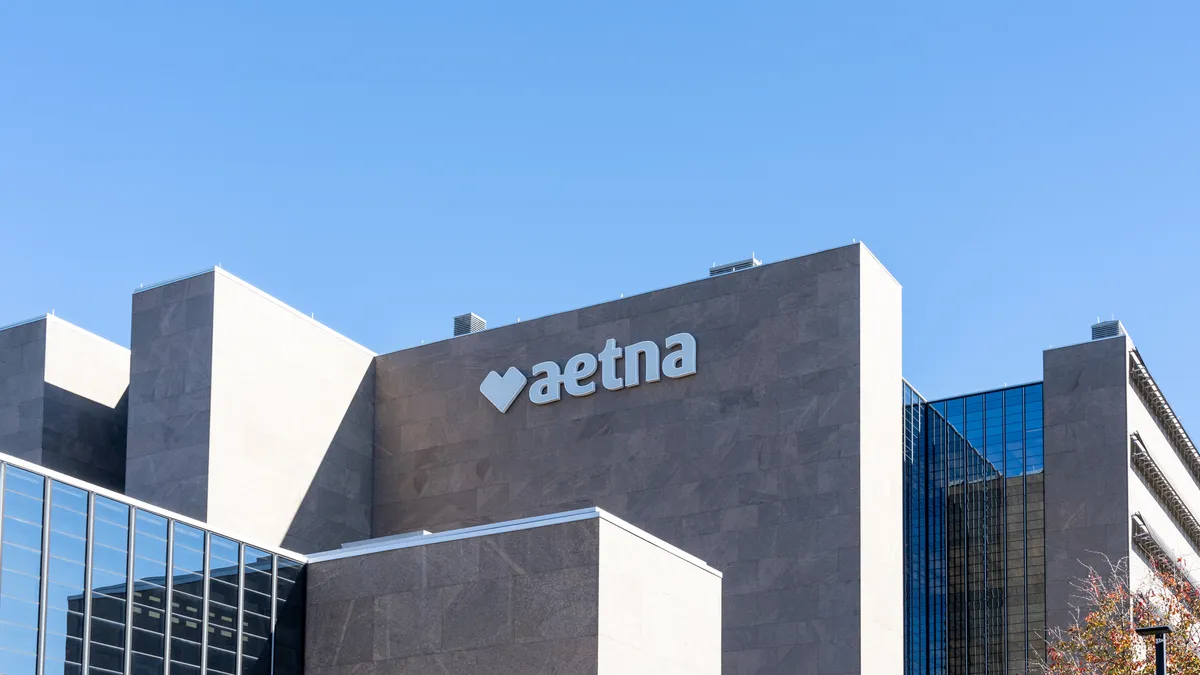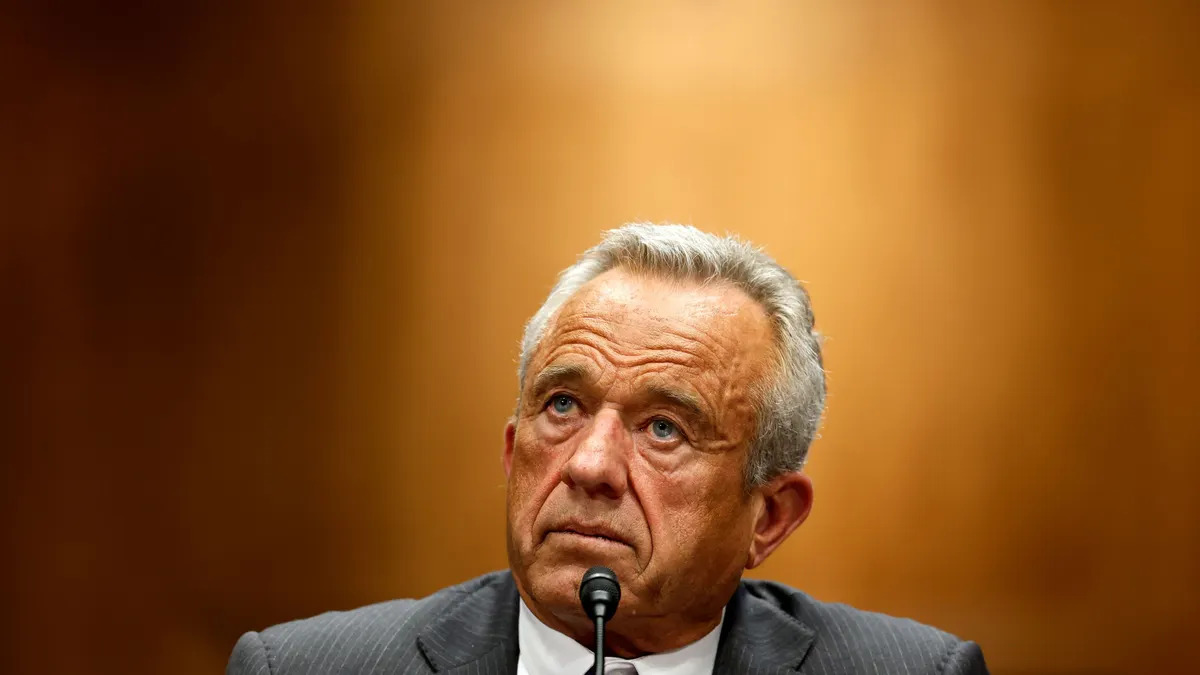Dive Brief:
- CVS Health’s insurance division Aetna will stop offering plans for individuals on the Affordable Care Act exchanges in 2026, after the company projected big losses in the business this year.
- The news was announced in tandem with CVS’ first quarter results, which exceeded investor expectations and represent a turnaround for CVS’ beleaguered insurance business, analysts said. The Rhode Island-based healthcare company reported net profit of $1.8 billion — up 60% year over year — on revenue of $94.6 billion.
- CVS’ pharmacy benefit manager Caremark also reached an agreement with Danish drugmaker Novo Nordisk to give its weight loss drug Wegovy preferred access on Caremark’s standard formulary, which covers tens of millions of Americans. The deal should increase access to Wegovy at the expense of other therapies, such as Eli Lilly’s Zepbound.
Dive Insight:
When CVS acquired Aetna for $78 billion in 2018, the company brought onboard a business that had a volatile history with the ACA. Aetna exited the ACA market entirely in 2018 but returned in 2022 as the exchanges calmed, and has since grown to offer plans in 17 states.
But now, Aetna is once again retreating from the individual exchanges after projecting hundreds of millions of dollars in losses from the business this year.
CVS’ healthcare benefits segment, which includes Aetna, recorded a reserve of $448 million in the quarter to cover anticipated losses for the business that won’t be covered by premiums.
“We are disappointed by the continued underperformance from our individual exchange products and have recently determined there is not a near- or long-term pathway for Aetna to materially improve its position,” CVS CEO David Joyner told investors on a Thursday morning call.
“Despite our multiyear efforts, we must recognize what is and what is not working and will focus on the areas where we have a clear right to win. This is not a decision we made lightly,” Joyner said.
With the exit, CVS is waving goodbye to an insurance segment that, while unprofitable, has not been the main source of Aetna’s recent challenges. The insurer was slammed with high medical costs for Medicare Advantage and Medicaid members last year, which cut CVS’ annual profits almost in half.
The plans also make up a relatively small business line for CVS. Of the company’s 27.1 million members in medical coverage, around 1 million are in individual ACA plans.
However, the ACA exchanges are experiencing significant policy turbulence from President Donald Trump, who has made no secret of his antipathy for the Obama-era law. In the Trump administration’s first 100 days, healthcare regulators have enacted or proposed policies expected to significantly shrink the exchanges.
Meanwhile, it’s unclear whether Congress plans to extend generous tax credits for ACA plans beyond this year. If the subsidies expire, millions of people are expected to exit the ACA exchanges.
There were some signals that CVS already had one foot out the door, with executives telling investors in the fourth quarter that they expected significant reductions in their ACA plans this year after raising premiums.
The exit will free up CVS to focus on more lucrative business lines, executives said. It also presents an opportunity for insurers that are bullish on growing their ACA footprints, such as Centene, to snap up additional market share.
Investors reacted favorably to the news, along with CVS’ improved earnings results and the company’s decision to hike its 2025 earnings guidance. CVS’ stock rose more than 7% in morning trading Thursday.
”CVS’ overall reported enterprise results showed clear positive signs across all segments,” Michael Cherny, an analyst with Leerink Partners, wrote in a note.
Overall, CVS’ health benefits posted almost $2 billion in adjusted operating earnings — almost three times higher than the $732 million recorded same time last year.
Medical spending continues to be elevated but was generally in line with CVS’ expectations in the quarter, management said, though they said they were remaining cautious given the early stage of the year.
On the call with investors, CVS executives also shared details about the company’s new deal with Novo Nordisk, which is a major shakeup in the billion-dollar market for obesity drugs — and a significant blow to rival drugmaker Eli Lilly, which also manufactures GLP-1 medications like Zepbound.
On July 1, Caremark will no longer prefer Zepbound in its standard formulary, replacing the drug instead with Novo Nordisk’s Wegovy.
As a result, Zepbound will likely cost more for Caremark clients to cover on their prescription drug plans, while Wegovy will cost less. Patients currently taking Zepbound will be able to transition to Wegovy, a CVS spokesperson said.
It’s a significant move in the coverage landscape for GLP-1s, which have shown efficacy in helping people lose weight but are significantly expensive, with prices surpassing $1,000 each month before discounts. Cost concerns have kept many insurers and employers from covering the drugs and, along with shortages of the medications, stymied access for many Americans.
“Now that both Zepbound and Wegovy are available in adequate supply, CVS Caremark was able to do what PBMs do best: compete clinically similar products against one another, and choose the option that delivers the lowest net cost for our clients,” the CVS spokesperson said.
The spokesperson did not comment directly on how much in savings Caremark negotiated for Wegovy, but said that Caremark passes along more than 99% of all rebates to its clients.
At this time, CVS is not forecasting any major earnings boost from the deal. But it could help Caremark by enticing more clients to the PBM’s weight management program, which pairs GLP-1 access with lifestyle and clinical support.
CVS’ pharmacy business — the largest retail drugstore chain in the nation — should also benefit. Novo Nordisk has selected CVS Pharmacy to sell Wegovy for $499, or less than half its list price, to cash-paying customers.
“It’s unknown at this point how the migration from the compounded pharmacies into other pharmacy settings are going to occur but we do expect there will be obviously some benefit by opening up 9,000 stores, 9,000 opportunities for patients to get the medication,” Joyner said.
The deal comes as part of a larger program Novo Nordisk launched earlier this week that includes partnerships with telehealth companies like Hims & Hers to sell Wegovy at a lower price.
Novo Nordisk’s stock was up about 2% while Eli Lilly’s stock fell more than 7% following the news.
However, during a Thursday morning call to discuss its own first quarter earnings, Eli Lilly’s CEO appeared to brush off CVS and Novo Nordisk’s partnership, saying that the drugmaker is focused on its direct relationships with consumers instead of deals with middlemen.
“The private pay market is an important segment. We’d like to grow that segment, and we’d like to grow choice and access in that segment. So we’re not interested at all in deals reducing access and choice for doctors and patients,” Dave Ricks told investors.
As for CVS, the company’s health services unit, which includes Caremark, reported adjusted operating income up 18% year over year to $1.6 billion in the quarter.
CVS’ pharmacy and wellness unit saw its adjusted operating income grow 12% to $1.3 billion, thanks to increased prescription volume.
CVS has focused on stabilizing reimbursement for its pharmacies, efforts that appear to be bearing fruit. However, its stores could be pressured this year due to tariffs and the chance of lower vaccine volumes stemming from consumer hesitancy and potential changes to immunization protocols from Trump administration officials increasingly skeptical of proven immunizations, especially COVID-19 shots.
Pharmacy is performing “as well as we would expect, with the one caution to watch out is the vaccines and immunizations as we anticipate volume impacts depending on the government actions before the end of this year,” Joyner said.















